Last Update: April 27, 2024
A long time ago, on a medium far, far away, two companies began a format war. The medium was the now nearly defunct DVD (Digital Versatile Disc) and the battle was over the delivery of digital surround sound to consumers’ living rooms and home theaters. In one corner, audio heavyweight Dolby offered up Dolby Digital (a.k.a., Dolby AC3). In the other corner, challenger DTS offered up DTS Coherent Acoustics (DCA). But most people knew that simply as DTS or DTS Digital Surround.
Nearly 30 years later the whole “Dolby vs. DTS – Which is Better?” debate rages on. And now the latest version of DTS surround sound, DTS:X immersive sound will be coming to the Disney+ streaming service on May 15th as part of the IMAX Enhanced program expansion. For the first time on a major streaming platform, customers will be able to hear some of their favorite movies in IMAX Enhanced Sound, powered by DTS:X. To find out why (of even if) this matters, we need to take a ride in the Way-Back Machine.
DVD and Surround Sound: The Bandwidth Problem
While the LaserDisc format was technically the first to deliver digital surround sound to consumers in 1995, the all-digital DVD format was the first major home video format to deliver discrete multi-channel surround to the home in 1997. This represented a huge step forward for home theater and multi-channel HiFi rigs because discrete multi-channel surround finally allowed home audio systems to approach the sound quality of movie theaters.

With discrete channels assigned to front right, front left, center, left surround, right surround and LFE (low frequency effects) tracks, the original surround sound mix for the movie theater could now be reproduced pretty convincingly at home. This six channel surround system is commonly referred to as 5.1-channel surround sound (5 main channels plus LFE). All you needed was a DVD player, a high quality A/V receiver, five (or more) good speakers and a subwoofer. Poof! Instant home theater! Oh, and a TV or projector would help if you wanted to actually watch something too.
Before DVD, the all-analog VHS tape format was limited to just two channels of sound. Surround sound was encoded into these two channels via a matrix encoding system (usually Dolby Surround or Dolby Pro Logic). You could get surround sound out of VHS tapes, but this system was not as effective at reproducing the spatial effects of surround sound as a discrete system. And the analog sound was limited in both frequency response and dynamic range. But DVD had its own challenges.
With limited data available on the actual DVD, all multi-channel digital sound had to be compressed in order to fit on the disc. Many DVDs include an uncompressed PCM digital audio track as well, but these are limited to 2 channel (stereo). So Dolby Digital – with its 5.1-channel capabilities – became a required part of the DVD standard in 1996 when the format was released. Dolby Digital 5.1 DVDs started rolling out in early 1997.
Some felt that the compression and low bit rate used on early DVDs resulted in a loss in sound quality. If not enough bandwidth is available for the soundtrack, it can suffer from digital nasties like harsh high frequencies, a “sharp” or “metallic” sound, compressed dynamic range or a noticeable loss of detail. DTS jumped in to rescue us poor audiophiles by offering up DVDs with “superior sound.”
Dolby vs. DTS: The Battle of the Bits
The Dolby Digital bit rate technically maxes out at 640 kilobits/second (kpbs), but Dolby Digital on DVDs is capped at a much lower rate of 448 kbps. Lower bandwidth means higher compression, which means the potential for more audible artifacts. Pay no attention to the fact that Dolby Digital on the 35mm prints in movie theaters at the time was fixed at an even lower 320 kbps. But I digress.
DTS digital surround supports bandwidths of 768 kbps and 1.5 Mbps (Megabits per second) in a 5.1 channel surround sound system. That’s more than three times as much bandwith compared to Dolby Digital on DVD. Of course, the two codecs vary in efficiency so you can’t assume a higher bit rate in one format is going to sound better than a lower bit rate in another. All else being equal, more bits are better. But as far as preferences go, it’s always best to trust your ears.
DTS was not originally a part of the DVD standard so the earliest DVD players could not handle DVDs encoded in DTS surround, however DTS was added to the DVD specifications as an option in late 1997. The first DVD with a DTS 5.1 soundtrack was “The Legend of Mulan” released in 1998 – not to be confused with Disney’s similarly titled film, “Mulan” nor its later live action film, also called “Mulan.” Although, maybe they were hoping that you’d confuse them, because “The Legend of Mulan” was apparently a pretty terrible movie.

More titles followed over time. And while a few dozen DVDs were released in “full bandwidth” DTS (1.5 Mbps), the studios soon realized that allocating that much room for audio left less room for video and extras. And no one wants to have to get up to change discs in the middle of a movie (Did I mention LaserDisc?). So most DTS DVD titles were released with soundtracks encoded at 768 kbps. DTS had limited success on DVD with only a few hundred titles released globally compared to hundreds of thousands of titles released on DVD in Dolby Digital (it was the default DVD sound format after all). There have been a few DVDs released with both Dolby Digital 5.1 and DTS 5.1 soundtracks available and many hobbyists spent long nights switching between those to pick a favorite.
The timing of the DVD launch coincided with the rise of online discussion forums, chat rooms and newsgroups like CompuServe’s CEFORUM and AVSForum, to name just two. Now anyone with a connection to the internet and a keyboard could sound off with their opinions about any topic they were passionate about. During the early days of this format war, a vocal contingent of A/V hobbyists declared that DTS was superior to Dolby Digital. And with the higher bandwidth of DTS compared to Dolby on DVD, there were some solid arguments to be made here. Of course, Dolby certainly had its fair share of fans as well. And so the battle began.

Lossless Surround Sound Changed Everything
When the new improved high definition Blu-ray Disc format came out in 2006, with vastly more storage available than DVD, both Dolby and DTS released “lossless” multi-channel surround sound formats. The definition of a lossless system is that nothing is lost in its encoding and decoding. So while DTS-HD Master Audio and Dolby TrueHD encoding created audio files that were much smaller than uncompressed PCM files, the resulting playback was a bit-perfect reproduction of the original soundtrack. So Dolby and DTS went to war again, this time on Blu-ray.
Even though both were lossless systems (perfect copies of the original mix), you still had fans claiming one sounded better than the other. Really the only logical explanation for this may be that the mixes of each were done differently (resulting in a different actual sound mix) or that Dolby’s mandatory dialog normalization (“dialnorm”) feature made the Dolby TrueHD version of the mix sound different from the DTS version. But also a part of it was that people like to root for the underdog (DTS) and “Stick it to the Man” (Dolby).
DTS-HD Master Audio enjoyed some success on Blu-ray Disc with more titles released in DTS-HD MA than in Dolby TrueHD. Some say this was due to lower licensing fees for the studios to pay for a DTS encoding, compared to Dolby. But in terms of quality, the two formats are functionally equivalent as they’re both lossless. Either format is capable of exceptionally good sound.
Getting Immersive
Surround sound evolved further in 2012 with the release of immersive sound formats (surround sound with height information). Again, both Dolby and DTS offered a solution for this: Dolby Atmos and DTS:X. Dolby made a big splash with immersive sound in 2012 with the release of “Brave” in Dolby Atmos in select theaters. Arrows from our plucky heroine’s bow were shooting not just beside you and behind you, but over your head as well. This was cool! And this excitement led to Dolby Atmos making it into home audio/video systems within 2 years. DTS was already out of the movie theater business by then, so they focused exclusively on the home market with DTS:X.

These object-based immersive sound formats could be delivered by a lossless codec (Dolby TrueHD or DTS HD Master Audio) but they could also be delivered via lossy codecs (Dolby Digital+ or DTS:HD High Resolution Audio). On Blu-ray Disc and Ultra HD Blu-ray Disc (4K), nearly all immersive soundtracks are delivered via a lossless codec. So buying a movie on Blu-ray Disc or Ultra HD Blu-ray Disc gets you the best quality immersive surround sound available.
Dolby Atmos is much more prevalent on Blu-ray than DTS:X but there are great movies available in both formats and just about all A/V receivers that decode one format decode the other, so consumers can buy titles encoded in either format and enjoy top quality immersive surround sound at home.
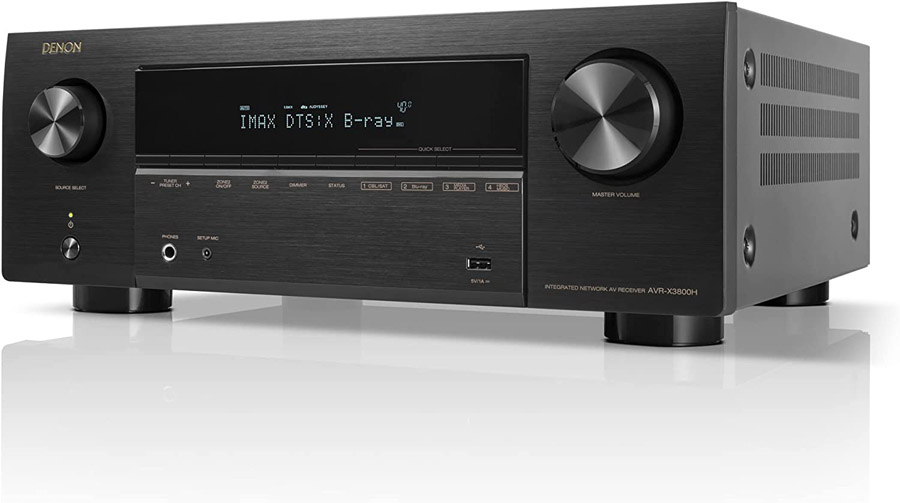
Streaming Brings Back the Bandwidth Problem
While physical media like Blu-ray Disc and Ultra HD Blu-ray are still the best way to enjoy movies at home (as far as audio and video quality is concerned), the sales of physical media are dwindling, and with that, so is the support of studios and retailers for these formats. Now it is far more common for consumers to view movies and TV shows over a streaming service like Netflix, Hulu, MAX, AppleTV+ or Disney+. And with the popularity of streaming, we are seeing the issue of bandwidth rear its ugly head again.
With the limited network bandwidth available to many consumers, and the costs involved with cloud storage and content delivery, studios and streaming services are trying to deliver the best quality picture and sound over the lowest possible bandwidth. And that means going back to lossy audio codecs.
In terms of the streaming services, Dolby Atmos has virtually cornered the market on immersive audio on the major streaming platforms. The most popular streaming services such as Netflix, Amazon Prime Video, MAX, AppleTV+ and Disney+ all support Dolby Atmos, with hundreds or even thousands of titles available in the format on each platform. As of today, there is really only one streaming service in North America that supports DTS:X sound: Sony Pictures Core (previously known as BRAVIA Core). And there are only a handful of DTS:X titles available on the platform. And only select high-end Sony TVs support DTS:X decoding, though more models have been added in 2024.
Audiophiles and movie lovers with a bit more disposable income can get a larger selection of movies encoded in DTS:X immersive surround via the Kaleidescape service. Rather than streaming, Kaleidescape works via instant digital downloads, so it isn’t limited by the bandwidth restrictions of a traditional streaming service. But Kaleidescape has a rather high cost of entry. Their most affordable player, the Kaleidescape Strato C, rings up at about $4,000, not including the propietary hard drive servers required to store your content purchases and rentals. And unlike streaming services, which offer a flat monthly fee for access to thousands of movies and TV shows, Kaleidescape charges by the title (rental or purchase).

If you can afford the Kaleidescape system, you’re in for a treat as it rivals UltraHD Blu-ray Disc for both audio and video quality. Kaleidescape actually downloads a copy of the movie into local storage on your home network, so it is virtually impervious to buffering, network slowdowns and outages. If you pre-order a title, Kaleidescape will download it in the background so it’s ready at the exact date and release time as specified by the studio. Kaleidescape combines the best feature of streaming (near instant gratification) with the quality advantages of physical media. The service even gets movies early, sometimes while they’re still in theaters, which is an additional perk. But its cost of entry makes it unlikely to match the use and popularity of mainstream streaming services.
IMAX Has Entered the Chat
A new player has joined the fray, on the side of DTS. IMAX, known for its massive cinema screens, created a program called “IMAX Enhanced” a few years ago. The IMAX Enhanced program is both a certification program for consumer electronics gear (TVs, projectors, receivers, soundbars, etc.) and a certification and delivery format for content (movies) on physical media and streaming services. The intent is to capture the IMAX movie-going experience at home.
On the video side, IMAX Enhanced content is intended to deliver an enhanced visual experience for home viewers. IMAX Enhanced content is delivered in 4K resolution with HDR and typically makes use of a 1.9:1 aspect ratio for all or part of a movie that was shot or composed for IMAX. This is very close to the 1.78:1 aspect ratio of most TVs and home projection screens. This means IMAX Enhanced content can use up to 26% more of the screen area when compared to CinemaScope 2.35:1 or 2.4:1 content with its large letterbox bars at the top and bottom of the screen. You can find out more about aspect ratios here: WTF is Aspect Ratio for movies?

IMAX Enhanced hardware certification ensures that the gear used at home can reproduce both audio and video content accurately, with proper color reproduction, contrast, dynamic range and frequency response. Of course, IMAX recommends that all components in the reproduction chain be “IMAX Enhanced Certified.” But we’d say that great speakers are great speakers, “certified” or not. Of course the source device does need to support IMAX Enhanced Playback and the receiver or soundbar needs to be able to decode DTS:X for the full experience.
On the audio side specifically, IMAX Enhanced uses DTS:X immersive sound to capture and reproduce the original 12-channel immersive IMAX sound mix from theaters. But in its current implementation on streaming sites (including Disney+), the audio portion of IMAX Enhanced titles does not actually use DTS:X sound. It uses Dolby Atmos. That is about to change.

On May 15th, Disney+ will be releasing its first title with DTS:X immersive surround as part of their partnership with IMAX. The live concert film “Queen Rock Montreal” will be the first IMAX Enhanced title on the streamer to support DTS:X immersive surround sound. The concert film was recently restored by IMAX and had a limited run in IMAX theaters in January, 2024. Its streaming debut on Disney+ on May 15th will mark the first time the full IMAX Enhanced experience with DTS:X sound will be delivered to home viewers via a major streaming platform.
Disney and DTS reps have told us that other “IMAX Enhanced” titles, including 18 films in the Marvel Cinematic Universe, will also be enabled for DTS:X sound on that day.

The Catch? Limited Hardware Support
The only “fly in the ointment” here is that for DTS:X sound to be available to the viewer, the streaming device (the actual hardware) has to support IMAX Enhanced and DTS:X as well. This will limit the audience, at least at first. At this point, the only streaming devices that we have confirmed will support the DTS:X stream on Disney+ at launch are select high-end Sony TVs including the brand new BRAVIA 7, BRAVIA 8 and BRAVIA 9, just announced last week, as well as Sony’s flagship A95L QD-OLED TV from 2023, and select Hisense TVs (including the U6/U7/U8 series). Outside North America, Philips, Xiaomi and Sharp also make compatible IMAX Enhanced TVs.
The NVIDIA Shield Android streaming device supports IMAX Enhanced content and DTS:X so, even though the NVIDIA Shield Pro is now approaching 5 years since its last hardware update, it is likely that NVIDIA Shield TV and Shield Pro users will be able to take advantage of the new DTS:X soundtracks on Disney+. But whether this will be supported at launch remains to be seen.

It is as yet undetermined whether popular streaming devices such as Amazon FireTV, Roku, or AppleTV will be able to support the DTS:X audio stream from Disney+ in their current versions, though it is possible some streaming devices could add support via a software update. While some reports say that the Amazon FireTV Stick 4K Max can passthrough DTS sound, an Amazon rep confirmed to me that their current FireTV streaming devices do not support DTS, so they will likely not be able to deliver the DTS:X stream from IMAX Enhanced content on Disney+. The rep said she would keep us updated if/when this changes.
AppleTV doesn’t support DTS surround in any form currently and that’s unlikely to change any time soon. A rep from ROKU told us that several of their devices (including ROKU TVs) support DTS, including DTS:X, but are not specifically IMAX Enhanced certified. So these may actually work if the Disney+ app on ROKU enables the DTS:X stream on these devices.
Once you’ve got a compatible streaming device, you’ll also need an A/V receiver or preamp/processor or a soundbar that is IMAX Enhanced certified or at least offers DTS:X decoding. There are plenty of IMAX Enhanced certified A/V receivers and processors available now, with models dating back to 2022. Supported brands include Anthem, Arcam, Denon, JBL, Marantz, McIntosh, Onkyo, Pioneer, Sony, Storm Audio and Trinnov. Check with your manufacturer or product user manual to see if your receiver supports IMAX Enhanced (or at least DTS:X decoding). For Sound bars, LG offers a few models that are IMAX Enhanced certified from 2023 and 2024 and Sony’s new BRAVIA Theater Bar 8 and BRAVIA Theater Bar 9 (2024 models) are also IMAX Enhanced certified.
One Last Bit About Bits
Oh and about that “bandwidth” thing I mentioned earlier? Our friend at DTS tells us that streamed IMAX Enhanced titles with DTS:X will “typically” deliver that audio stream at 448 kpbs. Could this be a step down from earlier versions of DTS surround on DVD with 768 kbps and even 1.5 Mbps? Unlikely. The advancements made in codecs in the last three decades should allow the latest DTS:X codec to do “more with less” as far as the bits are concerned. As the DTS rep explains, “DTS:X for streaming is our latest high-efficiency, low-bandwidth codec, which is technically lossy but perceptually lossless. Data rates do matter after all for streaming applications.”
Indeed they do. We’ll reserve judgement until we’ve had a chance to hear it for ourselves.
The Bottom Line
In just a few short weeks, the long-simmering format war of Dolby vs. DTS will enter its next phase as DTS:X immersive sound becomes available to millions of Disney+ subscribers thanks to an expansion of the IMAX Enhanced program. In principle, this could be the best way to experience IMAX films at home with sound that is a closer match to the original IMAX cinematic sound. Will anyone notice? And with both formats capable of such high quality audio reproduction, does it really matter?
We’re hoping to put together the right gear to put this new development to the test in an actual home theater. Stay tuned for updates.
How about you, dear readers? Are you excited about the prospect of IMAX/DTS:X sound from Disney+? Do you have a preference in the Dolby vs. DTS debate? Let us know your thoughts in the comments.
Related Reading:





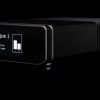



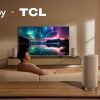
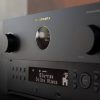








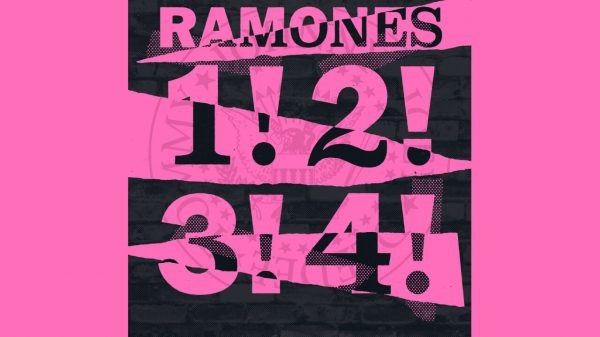
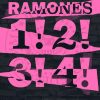
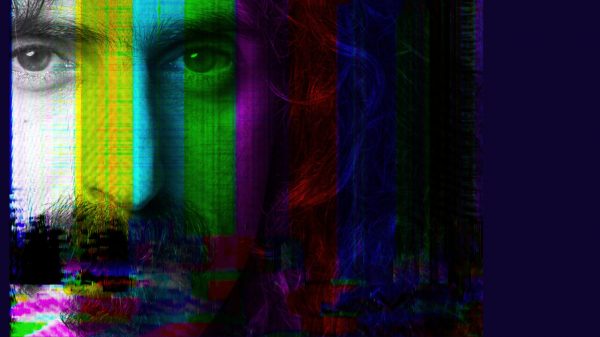



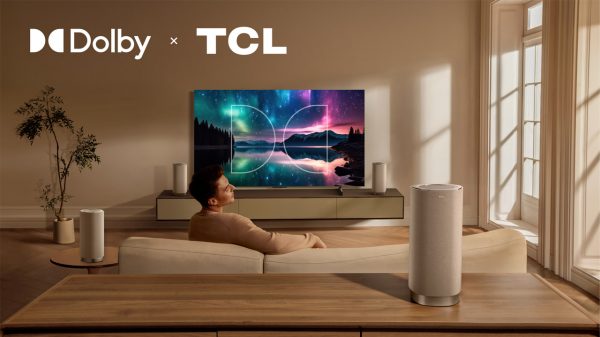


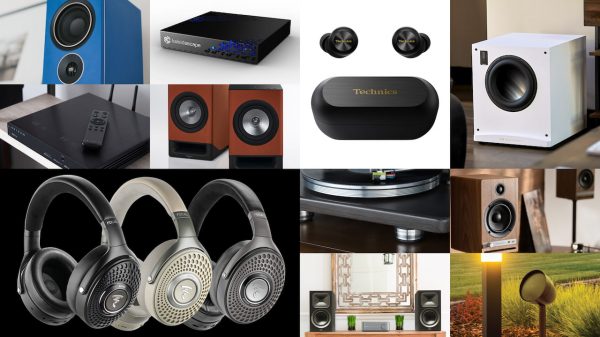













ORT
April 23, 2024 at 4:01 pm
My Denon AVR-X4300H says it supports DTS:X and we have Diznee+ so…Maybe? Right now Dolby fAtmos is more than just fine. It also has Auro 3D which is okie dokie for music.
I have owned the Denon since 2016 and have had no reason to seek an upgrade which suits me fine. I am in a (roughly) 10 X 10 room with a 9.2 setup. Many of the films I enjoy are in stereo or mono. I am kinda-sorta growing wearing of the whole Superhero genre as how many sparkly, glowing hands and diverse new powahs can there be. Apparently a crapload…
The Mandalorian, Andor and other well made Star Wars spinoffs work well with my system and are all in fAtmos. I am not fat but I am dumb and fappy.
ORT
Chris Boylan
April 23, 2024 at 6:05 pm
LOL. Honestly, any receiver that supports DTS:X should be fine for this, including your Denon. IMAX says you should go “IMAX Enhanced” for the whole playback chain but that’s because they want to “maintain the integrity of the artistic intent” (e.g., sell more IMAX licenses). 🙂
The challenge for most will be finding a streaming source that can deliver DTS:X. And now, with DTS:X Profile 2, it has to be able to *decode* DTS:X not just pass it through to something that can decode it. We probably won’t know until May 15th exactly which streaming sources will be able to stream the DTS:X soundtrack but I’m hopeful that the NVIDIA Shield and maybe even an Amazon FireTV Stick 4K Max might be able to handle it (update: they couldn’t). The official word from DTS/IMAX is that you need to use one of the IMAX Enhanced certified TVs, which in the US is just a few Sony, TCL and Hisense models.
Also, if you do find a compatible streaming source, but your TV can’t handle DTS or IMAX Enhanced, then you’ll need to plug the streaming box directly into your receiver or sound bar via HDMI *not* into the TV directly. If a streaming box sees a display device (TV/projector) that doesn’t handle DTS:X then the DTS:X option will probably not show up in Disney+.
Carl Tatz
April 26, 2024 at 11:43 pm
Historically, DTS has always outperformed
Dolby DVDs. Be interesting to see what the testing reveals.
IAS
April 27, 2024 at 3:07 pm
DTS was always more dynamic vs Dolby surround, it was lesser license fee that had DTS on more movies, competition is good for consumers though. At least pass through should be available on current streaming devices as all AVRs can decode.
Streaming Dolby atmos is not good as on disc, still buying 4k discs for full sound and PQ experience, it has not changed in last 5 years. Some AVR do DTS-X up conversion from DTS-MA track which is excellent.
Harris Fogel
April 28, 2024 at 6:27 pm
Chris, thank you so much for a wonderfully written, and detailed article on this topic. It filled in a lot of gaps in the backstory and history of those changes. I am somewhat ambivalent about the format wars, and have attended media presentations from DTS and Dolby, with each sounding wonderful, and each trumpeting their features.
I have tried both choices when available on disc, with little discernible audio difference. I have found that sometimes one format will be properly decoded while another might not be. I’ve always chalked that up to a programming error but it’s been very rare. Many of the firmware updates for Blu-ray players were to address an issue with specific titles, despite their being standards that are supposed to be followed.
At the last AES conference in NY in the fall of 2023, I was chatting with some well-known engineers in the immersive space, and they all agreed that Dolby Atmos was a reduced bandwidth and therefore lossy format. They described the process chain of recording in high-res audio for immersive audio, then having to essentially lose data for the Atmos mix. I’d love to learn more about that.
Thanks once again for the superb article!
Chris Boylan
May 1, 2024 at 6:48 pm
Harris,
Thanks for the feedback. Dolby Atmos isn’t a lossy format per se, but when delivered in music tracks over streaming services such as TIDAL, Apple Music and Amazon Music, it is carried over a lossy transport codec (Dolby Digital+) so it is lossy in those situations. Streaming video with Dolby Atmos is the same, carried over Dolby Digital+ on streaming services like Disney+, Netflix, etc. The only other music-oriented immersive sound format (Sony 360RA) is also lossy when listened to over a music streaming service like TIDAL or Amazon Music.
“DTS:X for streaming,” the latest incarnation of the DTS codec, is lossy only (no lossless version). But it has had about 3 decades of development since the early days of DTS and Dolby Digital, so I’m looking forward to seeing what they can do with a 448 kbps stream with IMAX Enhanced on Disney+ this month when they launch DTS:X soundtracks.
Both Dolby Atmos and DTS:X *can* be delivered in fully lossless formats, using Dolby TrueHD or DTS:HD Master Audio. But the only place you can find these lossless versions is on physical media (Blu-ray and UHD Blu-ray) or via a high-end download service like Kaleidescape.
Hope that helps!
Joe
June 9, 2024 at 2:27 am
I came away a little confused. I don’t own a BluRay player. I watch everything through either Tivo or Roku (Tivo for OTA viewing). Can I assume the newer formats have no advantage to me? I was thinking of upgrading from old Denon AVR because some content just doesn’t sound right any more,especially dialog. I realize how subjective that statement is; I’m trying to keep this short and am just starting to read up on trends in home theater.
Thanks.
Chris Boylan
August 2, 2024 at 5:10 pm
Hi, Joe,
Sorry. Just saw your comment now. TiVo recordings of broadcast TV shows won’t have the immersive versions of Dolby or DTS, but you will get Dolby Digital 5.1 surround on some shows. Roku supports Dolby Atmos and I believe can pass-through DTS but the Roku boxes can’t currently decode DTS:X so you won’t be able to take advantage of the new DTS:X option on Disney+ yet. But most Roku boxes do support Dolby Atmos on the major video streaming services osyou can take advantage of this by upgrading your receiver.
Now is a pretty good time to upgrade your receiver as you can get a pretty high performance A/V receiver with all the major surround sound support for somewhere in the $450-$900 range, depending on how many channels you need. I would recommend a “7.1-channel” receiver (or more) as then you can do Dolby Atmos and DTS:X with the traditional 5.1 surround plus two height channels for height effects. Most modern receivers do have a “night mode” which compresses dynamic range and allows you to still hear the dialog when listening at low volumes. They also usually have a dialog boost mode that specifically raises the frequencies of the human voice so you can hear dialog better.
But if this lowering of dialog is something that has happened recently, then you might actually check to make sure your center channel speaker is working properly. It’s possible you’ve blown a driver. If you go into your receiver’s set-up/calibration mode, it will send a test tone to all of your speakers. If you notice that the center channel speaker sounds very different from the rest, then it may have an actual mechanical problem and need to be repaired or replaced.
Good luck!
-Chris